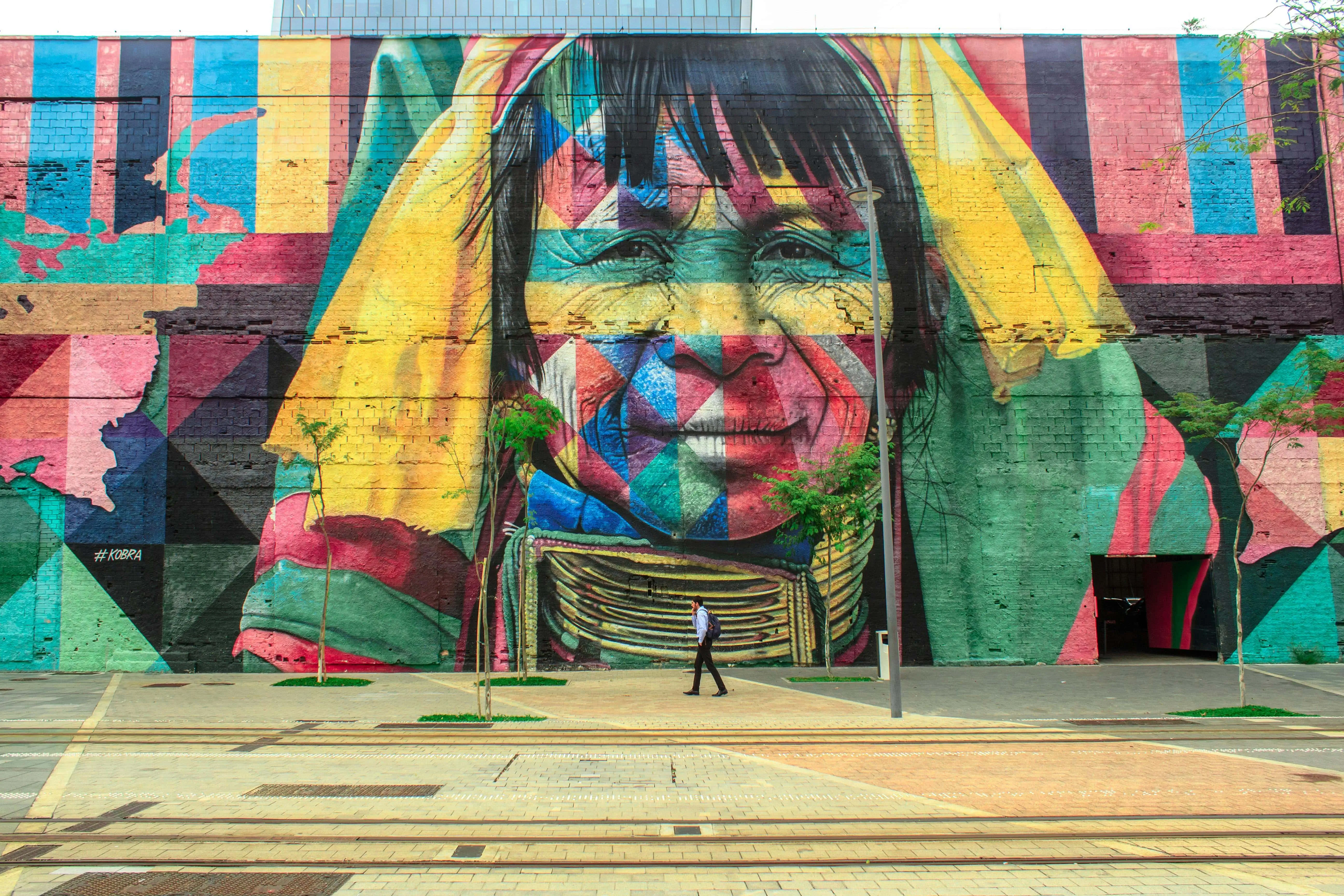Welcome to our comprehensive guide on understanding cultural identity! Recognizing and valuing cultural diversity is more important than ever in today’s globalized world. Whether you are an entry-level job seeker eager to navigate the multicultural workspace or simply curious about the profound impact of culture on personal and collective identities, this guide is designed for you.
Why Cultural Identity Matters
Cultural identity shapes every aspect of our lives, from our personal beliefs and values to our interactions with others. By delving into the nuances of cultural identity, you’ll gain insights that can enhance your personal development and improve your professional interactions in diverse environments.
In the following sections, we will explore the components of cultural identity, its significance, and the ways in which it influences our daily interactions and societal structures.
Understanding Cultural Identity
Cultural identity is the sense of belonging to a group that shares common cultural traits like language, traditions, and rituals. It shapes how individuals perceive themselves and influences their interactions with others. Let’s break down why cultural identity is so central to personal development and societal interaction.
Core Elements of Cultural Identity
Several factors contribute to shaping our cultural identities:
- Heritage: This includes the history, traditions, and values inherited from ancestors.
- Language: Language is not only a means of communication but also a carrier of culture and history.
- Religious Beliefs: These often define moral frameworks and community practices.
- Cultural Norms and Values: These are the unspoken rules and shared values that guide behavior within a culture.
Formation of Cultural Identity
Cultural identity formation begins early in life and is influenced predominantly by family and education. As individuals grow, so too does their exposure to various cultures, either through travel, media, or interacting with diverse populations. This interaction may reinforce or sometimes challenge pre-existing cultural identities.
The Components of Cultural Identity
Cultural identity is crafted from a tapestry of components, each adding unique colors and textures to who we are. Understanding these elements can deepen our grasp of both personal and collective identities.
Cultural Expressions
Every culture has its own expressions through art, music, dance, and literature, which serve as windows into the soul of a community:
- Art and Artifacts: Objects and artworks carry the legacy and aesthetics of a culture.
- Music and Dance are not only forms of entertainment but also mediums for conveying stories, emotions, and historical events.
- Literature: It reflects the beliefs, values, and conflicts of culture through the written word.
Social Structures and Institutions
Cultural identity is also shaped by the social structures and institutional roles prevalent in a society:
- Family: The foundational unit where cultural norms and values are first taught and learned.
- Educational Systems: Schools are crucial in transmitting cultural knowledge and fostering cultural understanding.
- Political Systems: The governance model can influence cultural priorities and the preservation of cultural heritage.
Each component interweaves to form the rich fabric of cultural identity, influencing how individuals connect with their culture and interact with others. For a more detailed understanding, resources such as the Smithsonian’s website on culture and the arts provide an extensive look at the various expressions of culture globally.
Influence of Culture on Personal Identity
Culture profoundly influences every aspect of personal identity. From how individuals see themselves to how they interact with the world, culture is a guiding force.
Self-Perception and Worldview
Culture shapes our self-perception and the lens through which we view the world:
- Values and Beliefs: These core elements dictate decision-making and ethics.
- Behavioral Norms: Cultural rules guide how we act in social settings.
Interpersonal Relationships
Moreover, cultural background impacts our interactions:
- Communication Styles: Culture determines whether we are direct or subtle in our communication.
- Respect and Etiquette: Different cultures have varied expectations about manners and respect.
The synthesis of these elements influences how individuals form relationships and partake in community life.
For those interested in delving deeper, visiting educational resources like the Library of Congress can further enlighten how various cultures influence global personal beliefs and behaviors.
By embracing our cultural foundations, we not only affirm our identity but also enrich our interactions in an increasingly connected world.
Impact of Globalization on Cultural Identity
Globalization has significantly altered the cultural identity landscape, blending borders and expanding influences. As cultures intermingle, individuals often find their identities evolving.
Exposure to Multiculturalism
The exposure to diverse cultures can enrich personal identity:
- Cross-Cultural Experiences: Travel and technology bring varied cultural insights into our daily lives.
- Adoption of New Practices: Individuals may embrace elements from other cultures, enhancing their own traditions.
Maintaining Identity Amidst Change
While globalization opens up new avenues, it also poses challenges to cultural preservation:
- Dilution of Traditions: The influx of foreign influences can sometimes overshadow local customs.
- Identity Conflicts: Balancing multiple cultural influences can lead to confusion about one’s core cultural identity.
This dynamic shift encourages adaptability, urging individuals to refine their cultural identities in a global context. Organizations such as UNESCO aim to support cultural preservation while fostering global understanding.
Those seeking to understand the worldwide fabric of cultures can explore the Global Oneness Project, which offers many resources on how globalization impacts cultural diversity.
Preserving Cultural Identity in a Diverse World
Preserving cultural identity is challenging and crucial in a world teeming with diversity. It involves honoring traditions while embracing modern influences.
Strategies for Cultural Preservation
Communities and individuals employ various strategies to keep their cultural identities vibrant and relevant:
- Educational Programs: Schools can offer a curriculum that includes local history and heritage.
- Cultural Celebrations: Festivals and ceremonies promote cultural pride and understanding.
- Language Revitalization: Efforts to teach and promote native languages help preserve linguistic heritage.
Role of Technology
Additionally, technology plays a crucial role in documenting and sharing cultural practices:
- Digital Archives: These repositories make cultural data accessible worldwide.
- Social Media: Platforms allow for the global sharing of cultural stories and experiences.
Respecting and promoting cultural diversity is essential for a cohesive society. Organizations like the National Park Service’s Telling All Americans’ Stories initiative offer insights into America’s cultural diversity.
Challenges in Maintaining Cultural Identity
Maintaining cultural identity poses numerous challenges, particularly in a rapidly evolving global society where cultural lines are continually blurred.
Global and Local Tensions
At times, global influences clash with local traditions, leading to tensions:
- Cultural Homogenization: Dominant cultures can overshadow smaller, local cultures.
- Economic Pressures: Modernization and economic integration can push traditional practices aside.
Intergenerational Differences
Another significant challenge is the gap that often exists between generations:
- Technology: Younger generations may adopt new cultures via global media, differing from their ancestors.
- Migration: Families that migrate face challenges in retaining their cultural practices while assimilating into new environments.
These challenges require thoughtful solutions and the commitment of communities and policymakers. Agencies like the National Endowment for the Arts work to support cultural groups in maintaining their traditions amid these pressures.
Exploring Cultural Identity Across Different Generations
Cultural identity evolves over generations, shaped by changing societal norms and technological advancements. This evolution often reflects the dynamic interplay between tradition and modernity.
Shifts in Traditions
As new generations mature, they reinterpret and sometimes redefine their cultural practices:
- Adaptation: New generations may adapt traditional customs to better fit contemporary lifestyles.
- Innovation: They may also introduce new cultural practices that reflect modern values and technologies.
The Role of Elders
Elders play a crucial role in this transitional period:
- Knowledge Transmission: They pass down historical and cultural knowledge.
- Mentorship: They mentor younger members about the importance of cultural heritage.
This generational dialogue is essential for maintaining a continuum of cultural identity while allowing for growth and adaptation. For insights into how different cultures handle these transitions, academic platforms like Ethnologue provide extensive research on languages and cultural dynamics worldwide.
Additionally, community centers and local history projects often facilitate workshops and seminars that encourage this cross-generational exchange, helping each generation appreciate and contribute to its cultural heritage.
Benefits of Recognizing Multiple Cultural Identities
Embracing multiple cultural identities enriches societies and individuals alike. It fosters a deeper understanding and appreciation of diversity.
Enhanced Social Cohesion
Recognizing various cultural identities can lead to more harmonious communities:
- Inclusivity: Inclusive environments are created where multiple identities are valued.
- Reduced Conflict: Understanding different cultures reduces misunderstandings and conflicts.
Personal Growth and Development
Individuals benefit by exploring various cultural backgrounds:
- Broadened Perspectives: Exposure to different cultures enhances critical thinking and creativity.
- Improved Adaptability: People become more adaptable and flexible in multicultural settings.
This broader acceptance strengthens community bonds and encourages personal exploration of diverse cultural landscapes. For additional resources on creating inclusive spaces, the Teaching Tolerance website offers tools and educational materials to promote understanding and respect among diverse groups.
Furthermore, understanding these benefits can transform how societies operate, spurring continuous growth and learning.
FAQs
What is cultural identity?
Cultural identity refers to the sense of belonging to a group that shares common cultural codes, such as language, traditions, and rituals.
How does globalization affect cultural identity?
Globalization can both challenge and enrich cultural identities by introducing new influences and expanding communication between different cultures.
Why is it important to preserve cultural identity?
Preserving cultural identity helps maintain heritage, fosters community pride, and ensures the transmission of traditions and knowledge to future generations.
Can an individual have multiple cultural identities?
Yes, many individuals navigate multiple cultural identities, integrating elements from each to form their unique cultural perspective.
How can culture influence personal relationships?
Culture affects how individuals communicate and interact, shaping perceptions and behavior in interpersonal relationships.
What role do educational institutions play in cultural identity?
Schools have a significant role in shaping and transmitting cultural identity through structured education and socialization processes.
What are the challenges of maintaining cultural identity?
Maintaining cultural identity can be challenged by globalization, technological changes, and intergenerational gaps in cultural practices.
Are there benefits to recognizing multiple cultural identities?
Recognizing multiple cultural identities can enhance social cohesion, increase inclusivity, and enrich personal development by exposing individuals to diverse perspectives.
Conclusion
Understanding and appreciating cultural identity is crucial in our increasingly interconnected world. By exploring and respecting the diverse cultural identities surrounding us, we enhance our personal lives and contribute to a more harmonious society. Exploring cultural identity helps to foster empathy, promote inclusivity, and encourage a richer, more diverse community experience.
Take Action
Join Diversity Employment today to connect with employers who value and champion cultural diversity. By participating, you contribute to a work environment that recognizes the importance of cultural identity and promotes equal opportunities for all. Embrace your unique identity and help foster an inclusive culture at work.
Together, let’s celebrate diversity and empower everyone to bring their whole selves to their professional and personal lives. Join us in this movement toward a more inclusive future.




